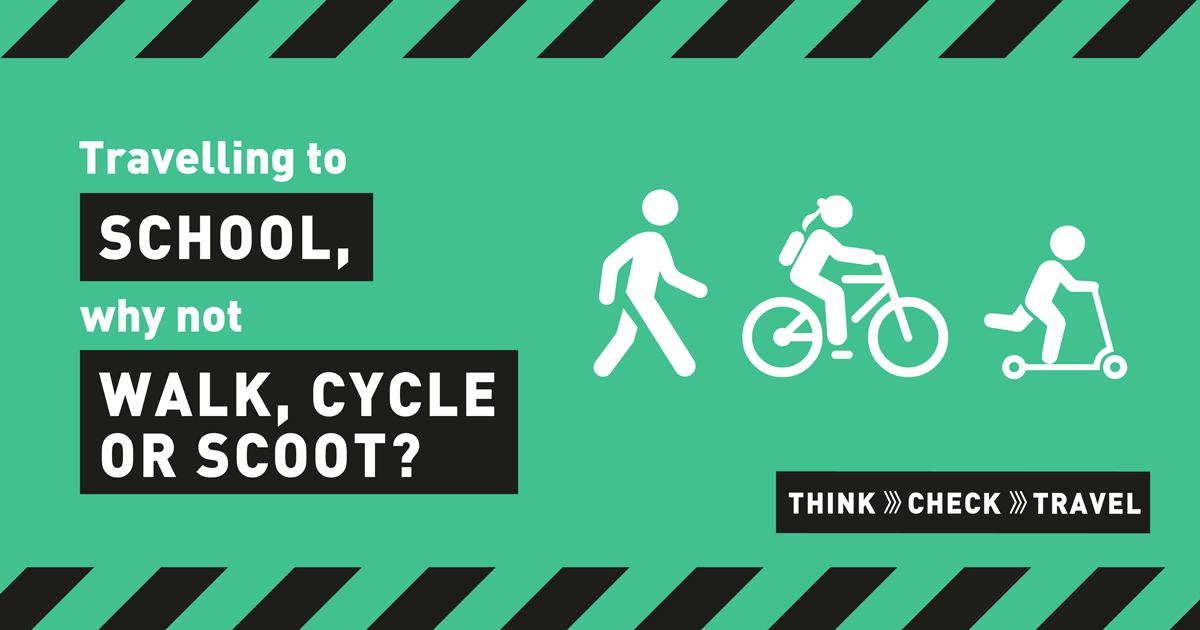Safe travel to schools and college
School bus services information is available on our School buses page
Walk, cycle or scoot to school or college
In the past, one in four cars on the road during the morning rush hour were doing the school run. And with public transport being recommended for essential key worker journeys only, as we see some children return to school, this could be set to increase. But it doesn't have to.
If you can, why not walk, cycle or scoot to school? There are lots of benefits.
It's the perfect way to squeeze in more activity and you can keep a safe distance. According to government guidelines, children and young people aged 5 to 18 need at least 60 minutes of physical activity every day. Adults should get a minimum of 150 minutes a week. At 1.6 miles, the average primary school journey can be safely cycled, scooted or walked.
It will reduce congestion and pollution around the school gates. Up to 40,000 early deaths are attributable to air pollution each year in the UK. Ditching the car and walking, or getting onto your bike or scooter is a great way to reduce your carbon footprint.
Physical activity is good for mental health, mood and self-esteem too. Teachers find that pupils who walk, cycle or scoot arrive at school more relaxed and ready to start the day than those who travel by car.
It’s a good opportunity to extend the school day if children are on reduced timetables. Walking, cycling and scooting together, looking at nature and season changes can help with learning about the environment we live in.
It increases children’s road safety awareness. Starting children cycling, scooting or walking more journeys from a young age develops road awareness which encourages independent travel as a teenager. It can also set them up for a more active adult life.
You’ll save money. Cycling, scooting or walking the school run will save you and your family money fuelling your car.

Useful pages
You may also be interested in these pages:
School buses
Lost property
Zoom Under 16 Travel Pass
Zoom 16-18 Travel Pass
Discounted tickets
School travel main page

